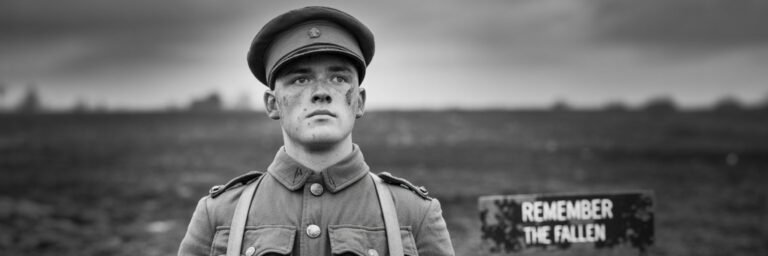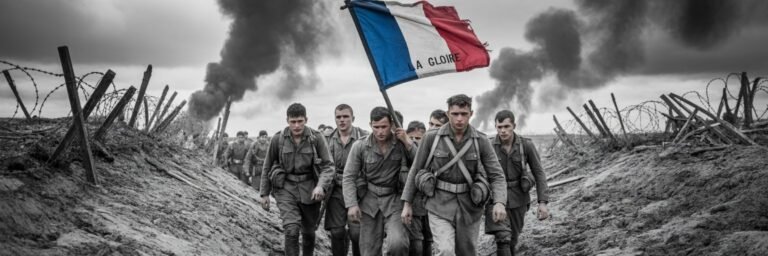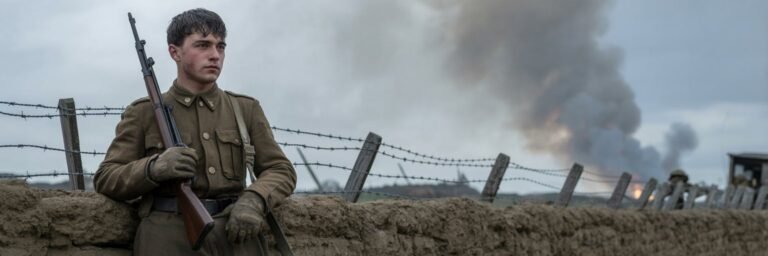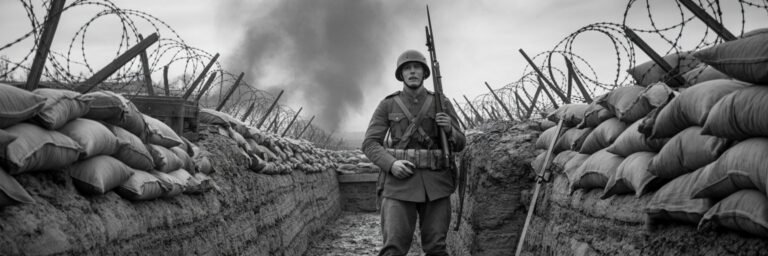INTRODUCTION
World War I marked an epoch in military history, a shift from traditional battlefields fought by flesh and blood soldiers to the onset of industrial and technological warfare. It was a war where the brutality of new weapons and inventive tactics intersected with human courage, resilience, and innovation. Slaughter on an unprecedented scale resulted from the collision of modern machinery with old-world military tactics. The introduction of trench warfare, the use of chemical weapons, and the advent of tanks and aircraft led to over 37 million casualties from 1914 to 1918, highlighting the devastating intersection of technology, strategy, and human suffering.
HISTORICAL BACKGROUND
At the dawn of the 20th century, warfare was on the brink of considerable transformation. Traditional strategies based on infantry and cavalry lines were still dominant, with the Maxim gun and field artillery acting as supplementary forces. However, the Industrial Revolution had opened a Pandora’s box of new military weapons and technologies. What transpired in the fields of Europe during World War I was stark evidence of a new era of warfare.
The war began in 1914 with the German Schlieffen Plan, a bold maneuver aimed at a swift victory over France. However, it failed, giving way to the stagnation of trench warfare – a muddy, shell-blasted purgatory where millions lost their lives. The extensive trench networks were a direct response to the terrifying efficacy of the machine guns and artillery. Barbed wire added another deadly layer to the defensive strategy, impeding charges against the enemy lines and creating easy targets for machine gunners.
THEORIES AND INTERPRETATIONS
Warfare theory during the Great War had to adapt to the new realities of the battlefield. One of the most critical adjustments was the shift from offensive to defensive warfare due to the unprecedented power of defensive weapons. It wasn’t until the development of the tank and the refinement of air warfare that tactical equilibrium was somewhat restored.
Tanks, first used in 1916 at the Battle of Flers-Cournelle, proved invaluable in traversing the treacherous no-man’s-land, breaking through enemy trench systems, and providing support for infantry assault. At sea, the German U-boat campaign threatened the naval hegemony of the British Royal Navy and revolutionized naval warfare.
One of the boldest and arguably most controversial interpretations of Meuse-Argonne, America’s deadliest conflict in the war, was that the Americans, with their fresh soldiers and spirits, turned the tide of the war. However, this theory is often countered by arguments that the Central Powers were already nearing collapse due to internal economic and political crises.
MYSTERIES AND CONTROVERSIES
The complexity of World War I has led to ongoing debates and mysteries. One such controversy is the Christmas Truce of 1914, where British and German soldiers purportedly fraternized in no-man’s-land. While widely accepted as a testament to the humanity of soldiers amidst the horrors of war, some argue that the event’s extent and nature have been exaggerated for propaganda and myth-making purposes.
Another point of contention is the claim that World War I resulted from a deliberate, premeditated plan by Germany and Austro-Hungary to provoke war, a theory famously put forth by historian Fritz Fischer. Others have argued for a more nuanced perspective, emphasizing the importance of miscommunication, miscalculations, political blunders, and systemic pressures.
SYMBOLISM AND CULTURAL SIGNIFICANCE
World War I had tremendous cultural impact. The sheer brutality and senselessness of the war shattered previously held ideals about honor, glory, and heroism in battle, ushering in an era of skepticism, cynicism, and disillusionment.
Trenches, poison gas, and machine guns became potent symbols of the war’s horror and the industrialization of death. The iconic red poppy, emerging amidst the devastation on the battlefields, symbolized sacrifice and remembrance, inspired by the famous war poem “In Flanders Fields.”
MODERN INVESTIGATIONS
In recent decades, historians and archaeologists have utilized technology to unearth further insights into World War I. Ground-penetrating radar and metal detector surveys have uncovered intricate trench systems, hidden tunnels, and forgotten battlegrounds. These finds have deepened our understanding of the daily life, hardships, and ingenuity of soldiers.
Furthermore, fresh analysis of diplomatic documents, diaries, propaganda materials, and photographs has perpetuated debates about the war’s causes and the culpability of various actors. Innovative studies on war-related trauma have also underlined the psychological toll of the war, a previously underexplored aspect.
LEGACY AND CONCLUSION
World War I left an indelible imprint on the 20th century. It redrew maps, toppled empires, and set the stage for World War II. It introduced the world to the brutal realities of modern warfare, defining an era of unprecedented conflict scope, scale, and complexity. The Great War taught a painful lesson in the sheer destructive potential of mankind, and we are still grappling with its reverberations today.
This war birthed the weapons and tactics that would go on to dictate future conflicts. It unleashed brutal, impersonal warfare, where calorie counts, shell production, and railway timetables counted as much as courage and tactics.
World War I, in its carnage, cruelty, and scale, remains a profound chapter in human history. Its weapons and tactics resonate even to this day. By studying and commemorating them, we pay tribute to the millions who fought and died, and channel their lessons to refrain from another ‘war to end all wars.’
More than a hundred years since its end, World War I continues to teach us about the depth and breadth of human resilience, the costs of ambition and arrogance, and most importantly, the need for peace—lessons that continue to echo through time.






